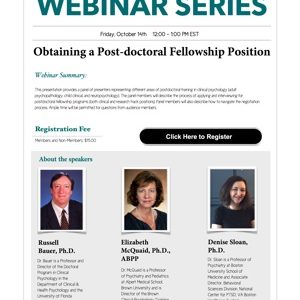Developing a Telehealth Practice That’s Secure, Easy to Use and Durable
$10.00
Presenter: Dr. Susan C. Litton
I consider myself a bit of an odd duck. I’ve been a practicing clinical psychologist since 1985 and still love and am humbled by being allowed to witness and participate in the healing process of another human being. I also like technology. A lot. Enough that I went back to school several years ago and got a degree in it. Enough that I run a healthcare software company in addition to continuing to see patients. Being a therapist feeds my soul. Playing around with technology is fun for my inner child.
Overview:
The COVID pandemic has been instrumental in redefining our profession. Most mental health professionals, psychologists included, are now using at least some form of telehealth with their patients. The federal government responded quite quickly to the pandemic by lifting many of the restrictions that had kept telehealth practices from achieving goals they had the potential to accomplish, including reaching diverse populations in underserved areas. Although we don’t yet know where all the pieces will land, it seems clear that groundwork has been laid for psychologists to incorporate telehealth practices for some or all of their patients. The downside of the COVID pandemic is that many of us cobbled together a telehealth practice very quickly. We started with video, then added other telehealth tools as we saw a need. This workshop will help teach you the easy way to do a telehealth practice vs the hard way. We’ll also discuss HIPAA in some depth, so you can learn how to keep your telehealth practice secure. Concrete, practical examples will be used so you leave with actual tools – not just ideas. Finally, the workshop will teach you concepts which will help you learn to choose the best tools for your practice even as both technology and legislation change.
Learning Objectives:
- Compare the EASY way to create and maintain a telehealth practice vs. the HARD way.
- Describe why email is described as a “compliance nightmare” and also why email that is end-to-end encrypted is becoming more and more important.
- Describe how patients currently view patient portals and providers who communicate via email.
Description
Presenter: Dr. Susan C. Litton
I consider myself a bit of an odd duck. I’ve been a practicing clinical psychologist since 1985 and still love and am humbled by being allowed to witness and participate in the healing process of another human being. I also like technology. A lot. Enough that I went back to school several years ago and got a degree in it. Enough that I run a healthcare software company in addition to continuing to see patients. Being a therapist feeds my soul. Playing around with technology is fun for my inner child.
Overview:
The COVID pandemic has been instrumental in redefining our profession. Most mental health professionals, psychologists included, are now using at least some form of telehealth with their patients. The federal government responded quite quickly to the pandemic by lifting many of the restrictions that had kept telehealth practices from achieving goals they had the potential to accomplish, including reaching diverse populations in underserved areas. Although we don’t yet know where all the pieces will land, it seems clear that groundwork has been laid for psychologists to incorporate telehealth practices for some or all of their patients. The downside of the COVID pandemic is that many of us cobbled together a telehealth practice very quickly. We started with video, then added other telehealth tools as we saw a need. This workshop will help teach you the easy way to do a telehealth practice vs the hard way. We’ll also discuss HIPAA in some depth, so you can learn how to keep your telehealth practice secure. Concrete, practical examples will be used so you leave with actual tools – not just ideas. Finally, the workshop will teach you concepts which will help you learn to choose the best tools for your practice even as both technology and legislation change.
Learning Objectives:
- Compare the EASY way to create and maintain a telehealth practice vs. the HARD way.
- Describe why email is described as a “compliance nightmare” and also why email that is end-to-end encrypted is becoming more and more important.
- Describe how patients currently view patient portals and providers who communicate via email.






Reviews
There are no reviews yet.